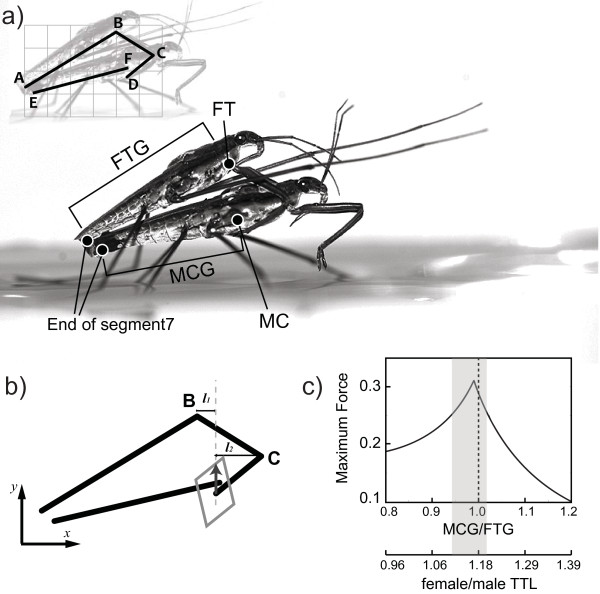Figure 1.
Mechanical connections of the pair Gerris gracilicornis and the basis of the mechanical model. (a) In order to overcome females' attempts to dislodge the male, the mounting males have to grasp the female midcoxa (MC). The pulling force may be applied by the male foretrochanter (FT). The inset indicates the basic frame for mechanical model. The upper black line segments (A-D) represent male water strider. The length of the first line segment AB is the male FTG, and the segments BC, CD correspond to the foreleg (BC = foretrochanter and forefemur; CD = foretibia). The points B and C represent the joints. The point D represents the last tip of the foreleg (foretarsus) touching female's body. The segment E-F represents female water strider and its length is equal to female MCG; (b) Application of force polytope to determine the optimal grasping force in the mechanical model. l1 and l2 are the respective normal lengths from the joint positions B and C to the line of given force and are used in calculations (see Additional file 1). This is an example of force polytope in the case of MCG/FTG ratio equal to 0.9; (c) Maximum pulling force as a function of MCG/FTG ratio. Maximum value was obtained when MCG/FTG ratio was 0.99. Shaded area indicate range of MCG/FTG values where the modeled maximum pulling force was greater than 0.25. Female total body length/male total body length ratio (F/M TTL) scale corresponding (due to correlations between body length and MCG or FTG) to the MCG/FTG ratio is shown in italic in (c).

